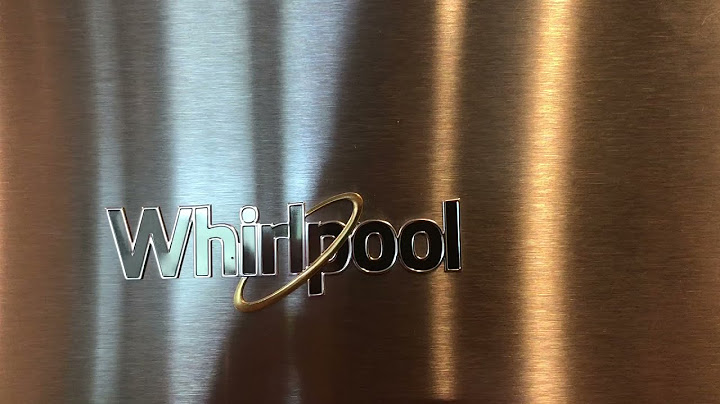 Show
LG refrigerators have a reputation for quality and longevity. Like any refrigerator, however, components within it can begin to age and might cease to function properly. When this happens, the device might not cool properly, which can result in food spoilage. Suddenly, you can find yourself with a headache as you try to figure out where to start when it comes to appliance repair options. Whether it’s your refrigerator section, freezer compartment, or both a refrigerator/freezer cooling issue, we’ll explore what you should know about how your refrigerator works, how you can diagnose potential issues, and the possible causes of your LG refrigerator cooling problems. How LG refrigerators work to coolNearly all refrigerator models work in the same way: They keep things cool by circulating refrigerant through their systems to maintain consistently cold air inside the appliance. Refrigerators rely on four basic components to complete this process: Condenser coils, evaporator coils, a compressor and refrigerant. The cooling process starts with the compressor, which increases the pressure of the refrigerant to a gaseous state. This gas then flows to the condenser coils, where it is condensed from a gas to a liquid. At this point, the high-pressure liquid refrigerant is passed through an expansion valve that brings down its boiling point to help it cool dramatically. From there, it’s passed over the evaporator coils to slowly evaporate, and any remaining liquid is returned to the compressor to start the process all over again. How to diagnose LG refrigerator issuesWhen you notice that your refrigerator no longer cools properly, there are a few parts that you will want to check to see if you can quickly diagnose the problem:
If you’re still having issues, you can check whether or not your condenser coils need to be cleaned, ensure that your door switch works properly when your refrigerator door is closed and check for any refrigerant leaks. Possible causes of LG refrigerator not coolingThere are a number of different reasons why your LG refrigerator might not be cooling properly. We will walk you through some of the most common reasons and provide you with information so you can start troubleshooting to see which one best fits the experience of your LG fridge.  Defect compressorYour refrigerator compressor plays a critical role in keeping the air in the appliance cool. This part constricts the hot gas form of the refrigerant and forces it outside into the condenser coils where it cools. The compressor, however, only needs to turn on at particular times of the cooling cycle. The start relay or start capacitor is the component that lets the compressor know when to turn on or off, and you can typically find it on the side of the compressor. If this part breaks, then the compressor will not turn on or off when needed. Signs that the problem might lie with your compressor include:
Dirty condenser coilsCondenser coils are located outside of the back of your refrigerator. These coils transfer heat to the air outside the refrigerator. If they get too dirty, then the coils cannot efficiently complete the required heat transfer — which can disrupt the entire cooling process. If you notice that the refrigerator seems to run continuously, as though it is working excessively, that is a good indicator that your condenser coils might need cleaning. To figure out if dirty condenser coils are your issue, pull your refrigerator out and take a look at the coils in the back to see if they have become coated with dirt and dust. Frost on evaporator coilsAlthough it might seem counterintuitive, frost build-up on the evaporator coils can actually be causing issues with your refrigerator’s cooling system. This problem is typically caused by low airflow or a refrigerant leak. For instance, if you do not have enough refrigerant entering the evaporator coils, then the system can become disrupted and excessive cooling on the coils can lead to frost. Similarly, blocked or clogged fan blades or a dirty filter can disrupt the airflow that helps keep the system moving, leading to the refrigerant failing to behave appropriately. Broken evaporator fanYour refrigerator might also fail to cool properly if you have a problem with your evaporator fan motor. The refrigerator evaporator fan pulls air across the evaporator coils and circulates it throughout the freezer and refrigerator compartments. If the fan has begun to fail, you might hear strange sounds coming from the refrigerator or freezer, with some people describing the sound of a bad fan like a chirping or squeaking. If you do notice problems with your evaporator fan, you will want to check for anything that might obstruct the fan. If anything gets into the fan area and prevents it from turning properly, this can also keep the fan from working. You can disconnect the fridge from the power source to closely inspect the fan and make sure that nothing keeps it from spinning. Low refrigerant levelYou can also experience problems with your heating and cooling if your fridge has low refrigerant. If the refrigerator develops a leak anywhere in the system, it can quickly lead to low refrigerant. If you notice any of the following signs in addition to warm refrigerator temperatures, it can be a sign that your fridge has a leak somewhere:
Defect thermistorA thermistor can be found in both the refrigerator compartment and the freezer section of your fridge. The job of a thermistor is quite simple: It monitors temperature changes and sends a signal to your refrigerator’s control board on whether or not your device is meeting the temperature you set it at. Therefore, if this component does not work properly, the refrigerator might not realize that its internal air has gotten too warm and needs to cool off. If you notice that your refrigerator seems to run constantly or not frequently enough and the temperature inside the fridge does not seem to line up with how the air inside actually feels, you will want to look more closely at this particular component. Leak in door sealThe door seal minimizes the air that can pass between the inside and outside of the refrigerator. If the seal does not work properly, then warmer air from the room will be able to seep into the refrigerator while the cooled air can easily escape. This will create a warmer internal temperature and make it much harder for the refrigerator to do its job properly. To see if your refrigerator door seal works properly, consider these tips:
How to reset an LG refrigeratorWhen people search for the term, “how to reset a refrigerator,” they often hope that finding this button can completely fix their refrigerator. If you do need to reset your LG refrigerator, you can look for a reset button that you might find on the main control board. You can also look in your user manual to see how to reset your specific model number or a certain error code you might see. However, these resets might only work for specific components of your refrigerator, like your ice maker or water dispenser. A reset ultimately might not fix some of these more nuanced issues, like a malfunctioning compressor or low refrigerant levels. For that, you’ll want to call an expert. And if your refrigerator is covered with a Cinch Appliances plan, we’d be able to connect you with one of our thousands of vetted service providers who can help diagnose and fix your cooling issue. Protect your LG refrigerator with CinchYour refrigerator plays a critical role in your home. Without it, you cannot properly preserve and protect your food. A malfunctioning fridge can quickly lead to accumulating bills from the spoiled food, not to mention the frustration of having to fix the refrigerator and replace everything that was lost. Fortunately, homeowners do have a way to prospect themselves. With a Cinch Appliances plan, you can make sure that your critical appliances are covered. This coverage means that, if something goes wrong, you can have a vetted tech come over to take a look and make sure that the appliance gets fixed quickly and properly. It is never convenient or easy when the refrigerator stops working, but you can make the event significantly less stressful. At Cinch, we offer more than 40 years of experience in the industry and several different plan options for homeowners interested in getting coverage for their home systems and appliances. Explore our available plans to see which one might work best for you and your needs. Notice to the ReaderThe content within this article is meant to provide potential solutions but aren’t guaranteed to fix the problem. To avoid further issues, though, please seek an expert opinion similar to one offered by a Cinch service provider. Why is my LG refrigerator not getting cold?Try unplugging the unit or trip the circuit breaker for 30 seconds to RESET THE REFRIGERATOR. You should hear the compressor kick back on and the unit will stabilize and start cooling within 24 hours. If not, then there is a power supply problem and the unit will require a repair service.
Why does my refrigerator turn on but not cooling?If you can hear the compressor running but the fridge isn't cooling, the problem is most likely either frost-clogged evaporator coils or a stuck or broken evaporator fan. Evaporator fans often squeal or chirp when they start to go bad.
How do you reset a refrigerator that is not cooling?Pull the unit away from the wall and unplug it. Check the owner's manual for any “off” or “zero” settings in your fridge and freezer and set them to off or zero. Plug the unit back in and adjust the temperature controls of both to your desired setting. Give the fridge about 24 hours to cool to your set temperature.
Is there a reset button on an LG refrigerator?There is no reset button on an LG refrigerator. If you need to reset it after a power outage, unplug it for about 30 seconds. Then, replug it and set your desired temperature setting. Take note that it may take up to 24 hours for your fridge to stabilize its internal temperature after a reset.
|

Related Posts
Advertising
LATEST NEWS
Advertising
Populer
Advertising
About

Copyright © 2024 en.frojeostern Inc.


















